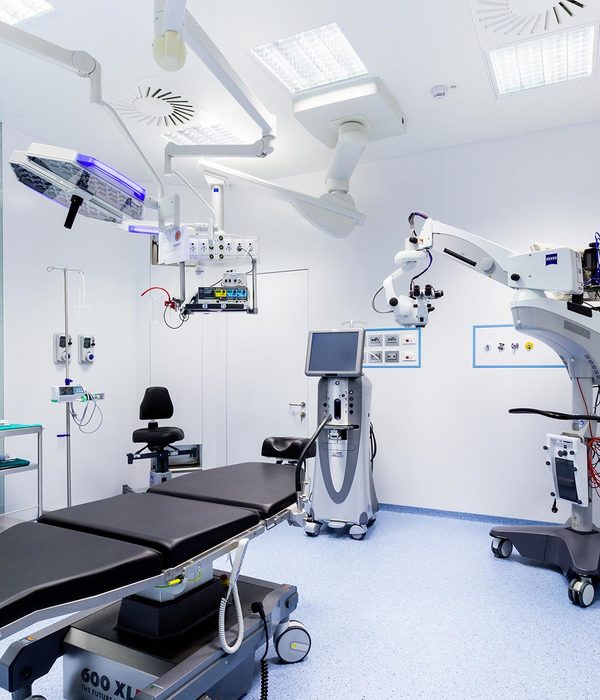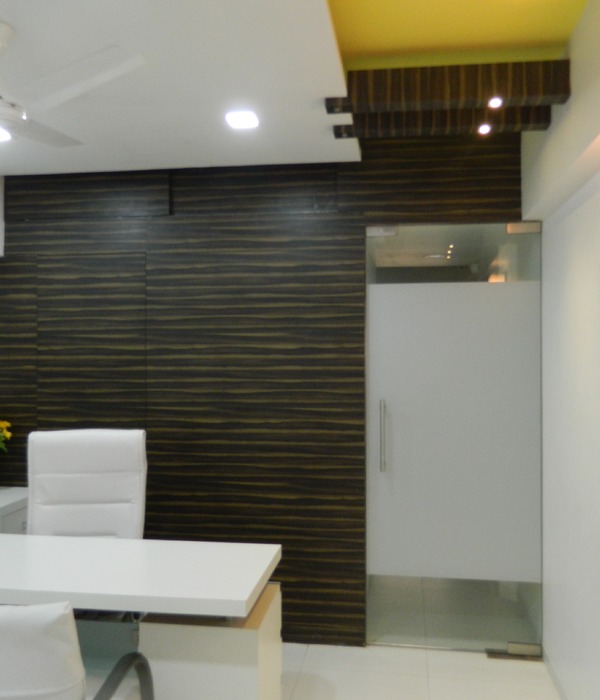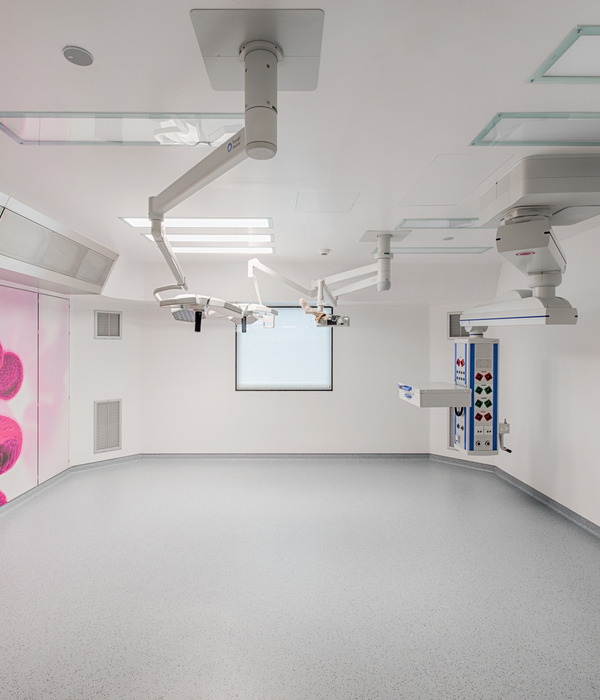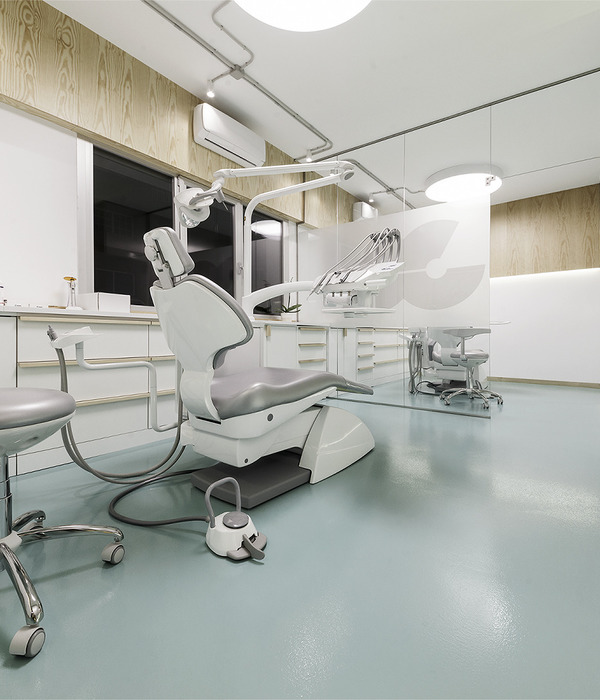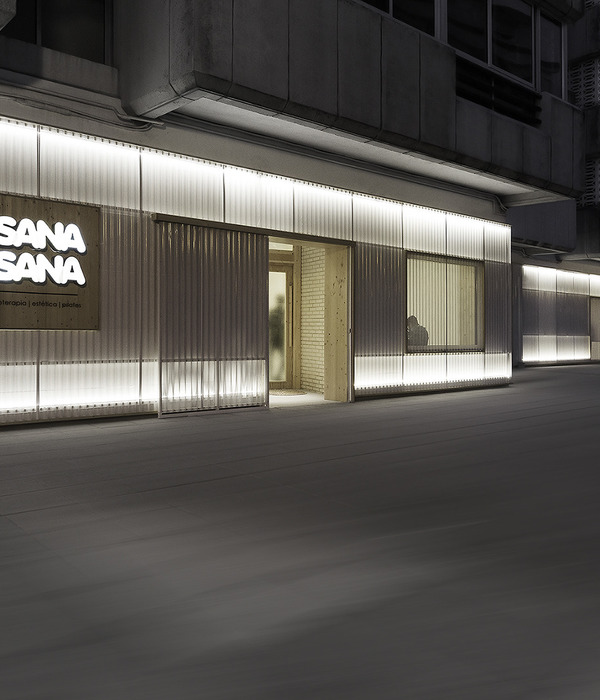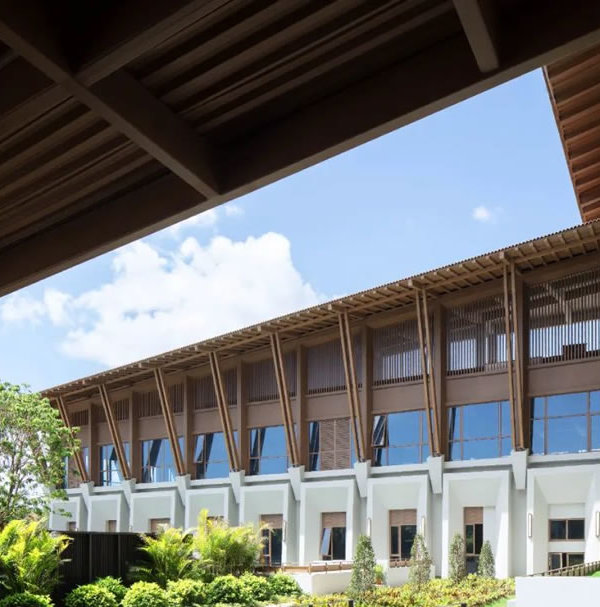Architect:EGM architects
Location:Voorburg, Netherlands; | ;View Map
Project Year:2021
Category:Hospitals
A site once occupied by the Forum Hadriani, a prominent Roman settlement and now a UNESCO World Heritage Site in Voorburg, is now the location of the new Treatment Centre. The centre is part of the Reinier de Graaf Groep. Voorburg thus retains a healthcare campus with space for blood collection and outpatient clinics, among other things. These clinics offer support in all stages of life: it is very elegantly called Lifecycle Healthcare. The clinic has a radiology department and a state-of-the-art fertility centre with laboratory where doctors perform almost all fertility tests and IUI, IVF and ICSI treatment.
Pavilion in greenery
The Treatment Centre is built on the site of a former apartment complex for nurses, which belonged to the Deaconess Institute in Voorburg. The complex has been partially demolished, while large parts of it are set to be transformed. Because of the underlying valuable archaeological contours, it was only possible to build the new building on the existing foundation of the demolished nuns' flat, which made the design considerably more challenging. Because of that limited area, a considerable cantilever of the building was chosen. The large overhangs extend more than 5 metres beyond the foundation and allow the centre to ‘hover’ above the ground in the greenery as a friendly pavilion. The forecourt in front of the building also subtly acknowledges the site’s history with the contours of a miniature Forum. Here, pedestrians have priority and several parking areas and waiting and relaxation areas are located. Visitors reach the Treatment Centre by crossing a short footbridge.
Transparency and clarity
All around, the building has a high degree of transparency due to large vertical windows over the two floors. The park-like landscape can be experienced from indoors. Healthcare professionals and patients enjoy views of the surrounding greenery everywhere, where privacy allows. This offers relaxation and distraction, and helps visitors and care professionals to orientate themselves easily in the building. In places where privacy is necessary, such as the examination and treatment rooms, facade openings are detailed to ensure privacy. From the entrance, visitors are drawn up the stairs by the abundance of daylight. It is part of health promotive design that reinforces Lifecycle Healthcare here. On the floor above, they reach a large, open waiting area for the outpatient departments.
The facade is finished in vertical strips of wood. The strips are greyed thermal impregnated and are interrupted by floor-high clear glass windows. Service and emergency doors visible from the outside are neatly concealed in the wooden facade. The cantilevered ground floor and eaves form a clear-white frame on all sides of the building. At the entrance, the lower edge is raised to the first floor, creating a recognisable canopy above the fully transparent entrance.
The interior uses a calming colour palette to reduce stress. Patients and their loved ones are more likely to feel at ease as a result. Throughout the building, they see graphic references to the site's Roman history. Routes for visitors and staff are separated as much as possible to allow both groups to move unimpeded through the building. Functions are logically grouped. For example, spaces for IVF treatment are positioned close together and around the IVF lab, and connected directly to one another. Staff wearing protective clothing enter the lab, a clean room, through an airlock.
Sustainable and healthy
The all-electric building is highly energy-efficient due to the presence of solar panels and six electric air-source heat pumps. Sensors control temperature and lighting per room, which can also be controlled via a tablet. A major contribution to sustainability, limiting material use, comes from reusing the existing foundation. On this, a structural framework was designed to accommodate the current building's needs while allowing for future adaptation to suit evolving purposes. Given the rapid developments in outpatient care, this makes it a sustainable and smart choice for healthcare real estate. The interior uses natural and circular materials with a low CO2 footprint. A special feature is that the floor finishes are taken back for reuse by the supplier at the end of their lifespan. High standards were set for finishes in the IVF lab and only emission-free materials were used. A healthy environment for a healthy new life!
▼项目更多图片
{{item.text_origin}}

